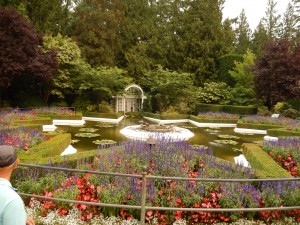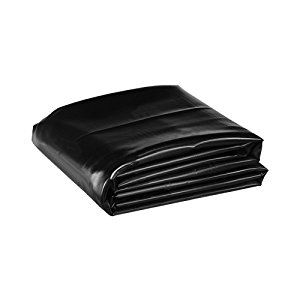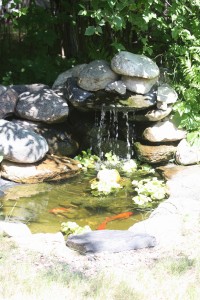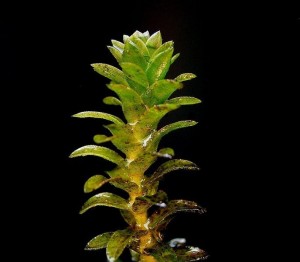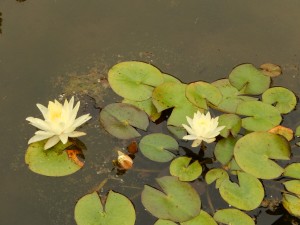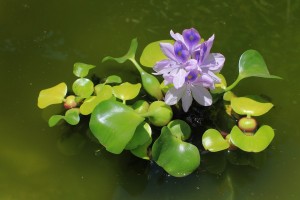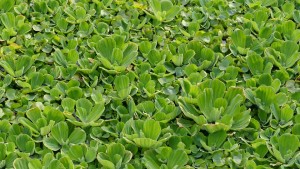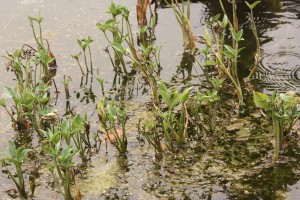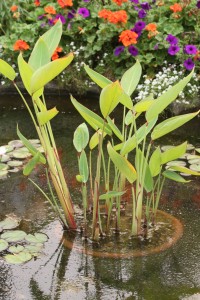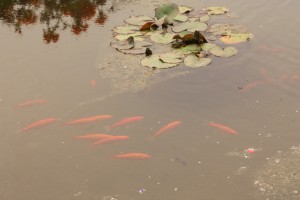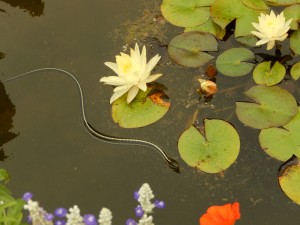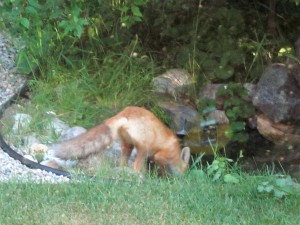Beginning Garden Ponds including Fish
Setting Up Your Garden Pond:
- Location :
- Pond size – Make the pond as large a surface area as your space allows. Try to have a pond with at least one shelf 6 – 9 inches deep for plants in pots or baskets.The depth should be up to 2 feet and deeper is better for fish as it prevents water temperature fluctuations and the fish are more comfortable as they have more places to hide.
- Location in your garden – pick a place which has level ground and no rocks for easier pond construction. Choose an area where you already enjoy spending time and imagine a water feature with a babbling waterfall or a fountain adding to a favourite place. Trees, shrubs and existing plants around the pond will frame it and add a natural canopy. Remember trees and shrubs lose leaves and roots can puncture a pond liner so take that into account.
- Sunlight – locate your water garden where it will receive five to six hours of sunlight so the water plants can thrive.More than six hours of sunlight may lead to excessive algae growth. Also the sunlight will heat the water too much which will not be good for some plants and your fish as warmer water has less oxygen dissolved in it. The warmer water will also evaporate faster.
- Wind A pond should have some protection from the wind. Wind will blow leaves and other natural material into you pond and make water evaporate faster.
- Electricity pick a location which is close to an outdoor outlet from which you can run an outdoor extension cord to your pond pump and filtration system. Protect your cord and especially the ends from the weather. The outdoor outlet should be GFCI (ground fault) protected. You can also have an electrician run underground cable from your home for a more permanent option.
- Water make sure there is a water supply with a hose close enough to your pond so you can add water to replace the evaporated water and also to clean your filter regularly.
- Depth of Pond according to Yorkton building codes there are no present restrictions on depth of your pond. Saskatoon has a depth of 2 and 1/2 feet as a limit before fencing is required. Common sense is the rule here. I would go no deeper than 2 feet as a safety precaution for an infant by your pond and any infants should be supervised when exploring your pond
2) Types of Ponds:
a) Container Garden Ponds – almost any container that holds water can be used as a container pond. The larger the container, the more plants and water features it can hold. I would not recommend adding fish unless it is a large container with a pump and filtration. Make sure the container sits on a solid base and it could also be dug slightly into the ground. Temperature swings to extremes in a small container so follow the location rules above. These ponds are usually very small and can be easily incorporated into your present garden and are a simple way to be introduced into ponds. Do partial water changes to help discourage mosquito larvae.
Examples of containers are:
- Galvanized containers
- Plastic tubs and containers
- Old bath tub
- Porcelain pots
- 1/2 wooden barrels – use a plastic liner to prevent chemicals from the wood leeching into the water and also water proofing the barrel.
b) Preformed Shell Ponds – can be fibreglass or rigid plastic. They are very tough and will last for years. Dig a hole to fit the preformed shell pond. Level the bottom and line bottom with sand. Insert and fill with water. Back fill with sandy soil as it settles. You can edge with your choice of materials. For above ground ponds one can place them on a deck or other structure and build a wooden box around them with a seating bench. However they can be very heavy as water weighs 10 pounds per gallon. A 50 gallon pond would have a weight of 500 lbs just counting the water alone.
c) PVC liner ponds – Tough and durable P.V.C. pond liners are flexible membranes that make water gardens easy to install and are non-rotting, winter safe and are fairly permanent. They can last 20 years plus. Flexible pond liners permit many shapes — rectangular, square, round or free form. Ledges of different depths can be incorporated to accommodate water plants, including those that prefer shallow water.
To Create a PVC lined pond: Get a PVC liner from a retailer such as Canadian tire, Young’s Plant world or do an online search for retailers which sell liners. The size you buy will help determine the size of your pond.
To determine the liner size you need:
- length – add overall length plus twice the maximum depth
- width – add the overall width plus twice the maximum depth
It is generally a good idea to add 2 feet to both of these measurements to allow for error and a generous overlap over the pond edge.
Example: A pond 3 ft. Wide x 5 ft. Long and 1 1/2 ft. deep will need a liner 8 x 10.
Width: 3 + 1.5 + 1.5 + 2 =8
Length: 5 + 1.5 + 1.5 + 2 =10
- Lay a rope out to about the size of the pond and use it as a guide or drive wooden stakes into the ground as markers. Dig straight down following your guides to the depth you want. At one end you can dig less to form a shallow shelf about 6 -9 inches deep for potted plants. Remove any rocks or roots you come across to prevent punctures in the PVC liner. Put underlay in the hole such as 2 inches of sand, newspaper or old carpet to help cushion the liner.
- Lay the liner over the hole and use bricks or stones to hold it in place.
- Add water until it is 1/2 full, then work on the liner gently to shift it to straighten out any creases. Now fill the pond to the top.
- Use large rocks, bricks or flagstones to secure the liner and hide the liner which is on the pond edge. Now is the time to run cables and hoses to your pump/filter unit. Pump/filter units can be bought at Canadian tire, Young’s plant world or other pond retailers. Go bigger rather than smaller. Incorporate them into the stones to make them less visible.
- Complete the pond by adding a fountain attachment to your pump or one can also add more stone work at one end to create a waterfall and ledge to create a pleasant sound, aide water recirculation and bird bath. The water recirculation will help prevent mosquitoes from laying eggs. You need a lot of stones to create a waterfall or any other stonework but it is well worth the effort.
3) Adding Plants: It is important to wait at least 48 hours before introducing water plants to the pond since our city water will contain chlorine and other chemicals. Algae is the bane of all ponds as it takes over the surface and smothers out both plants and fish. It can be controlled by proper plant selection and controlling length of sunlight hours.
There are 3 types of pond plants:
1) Oxygenators (underwater plants) compete successfully with algae for nutrients and add oxygen to the water. They help keep the water clear and are important for water quality.
Examples are:
- Fanwort
- Hornwort
- Anacharis
- Elodea (canadian pondweed)
They can be allowed to stay suspended in the water or planted in gravel filled pots at the bottom of your pond. They can be bought at pond retailers or aquarium fish shops.
2) Floating Plants leaves float on the surface of the water shading and cooling the water for the fish and out competing the algae. They also fish hiding places and a place to spawn and lay their eggs. About 50 percent coverage of the surface is ideal.
Examples are:
- Water lily – many varieties
- Water hyacinth
- Water lettuce
- Common duckweed (food for goldfish)
They can be bought at pond retailers or online retailers.
3) Marginals are moisture-loving plants which can be quite attractive and they also utilize nutrients helping to out compete the algae. They can be planted in gravel filled pots to place on your pond shelf or along the edge of your pond.
Examples are:
- Water plantain 6) Marsh Marigold
- Horsetail 7) Siberian Iris
- Arrow Arum 8) Calla lily
- Hosta (edge plant) 9) Ferns (edge plant)
- Bergenia (edge plant) 10) Umbrella Sedge
They can be bought at pond retailers or online retailers. For winter cut off the leaves of the water marginal, add pond water to a small container, throw in the plant and seal the container. Keep in a cool darker place and if all goes well adding light as spring approaches will cause your plant to produce new shoots and be ready for the new season.
4) Adding Fish: Once your plants are planted, wait two weeks for your pond to reach equilibrium before introducing fish.
Although there are many species of fish, the fish of choice for our climate is the hardy gold fish or Koi. They are members of the carp family and are suited for the prairies. The comet gold fish is the hardiest of the goldfish and from a pet store are inexpensive. Koi are much more expensive and grow quite large ( 2 – 3 lbs.) and require a large deeper pond. Koi can live to 25 – 40 years of age so put them in your will. The Koi will also require a large over-wintering trough.The number of fish to add is determined by the size of your pond. If you have aeration through a waterfall or fountain you can double the number of fish kept. For a small pond 4 goldfish would be plenty. (2 in. of fish/square ft. of surface area of aerated pond)
Do not over feed your goldfish as they can survive days and even a couple of weeks without food in an established pond eating insects, worms and nibbling on plants.When you do feed them add once a day a small amount of pond pellets when the fish are active. This is great fun for kids of all ages. Make sure you clean your pond filter regularly (weekly) to keep you fish happy and healthy.
To over winter fish in a large pond you need at least a 3 ft. deep pond or when the season turns cold in late October bring your fish in and let them slowly get to the same temperature as your home before you put them in an aquarium or a plastic stock tank. Feed them daily, change the filter regularly and let them dream about their summer pond. In the spring when you plant your garden your pond can also be set up for a new season.
5) Other Critters: Your pond can be attractive to other types of wildlife
- Other plants will naturally seed along the edge of your pond drawn by the moisture and other established plants.
- If you have a waterfall and ledge, birds will naturally be attracted for a drink of water or a nice bath on a hot day.
- Butterflies and other insects will be drawn to the water and flowering plants
- Cats will try to catch your fish but I have never lost one
- Frogs may appear for a swim
- A garter snake will like the water and warm rock pile
- If you live in the country or near a forest, you may see foxes, coyotes and even a bear

